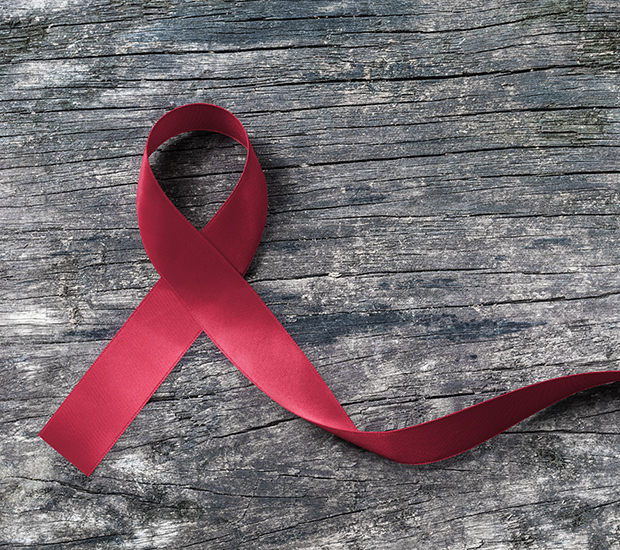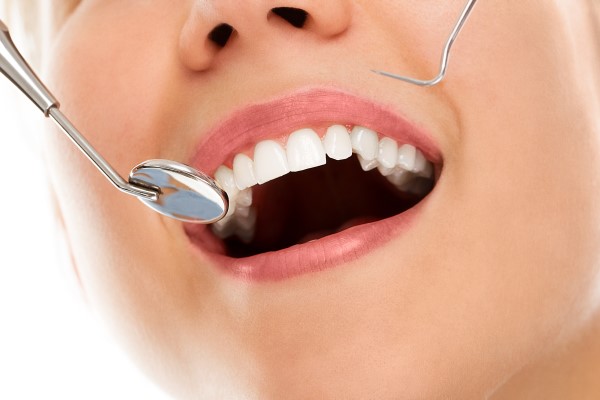Oral Cancer ScreeningCoral Gables, FL
Complete health dentists understand there is an undeniable connection between oral and systemic health and strive to treat patients in a comprehensive manner. As such, oral cancer is typically screened as a precautionary measure during initial consultation appointments. The screening process is simple, quick, and painless.
An oral cancer screening allows the dentist to see and feel the inside of the mouth and throat for any abnormalities. The screening checks for both cancer and precancerous conditions to prevent cancer development. An annual screening can make all the difference, as the earlier oral cancer is found, the faster and easier it is to treat and recover. Early detection is key to effective treatment.
Oral cancer screenings are available at Bushdid Smiles in Coral Gables and the surrounding area. Our staff can help you learn more about the procedure you are undergoing and answer any questions you have about the screening. Call us at (305) 740-1443 to schedule an appointment today.
Signs Indicating a Need for Screening
Most dentists screen for oral cancer during routine dental visits in an attempt to find lesions and signs of cancer or precancer symptoms. Identifying sores, cysts, lesions, and other conditions of cancer early greatly aids in recovery benefits. Orally-healthy individuals are often also screened as a precautionary measure and to prevent conditions that may lead to cancer in the future.
Dentists also notice signs that indicate a need for an oral cancer screening at any point between visits. According to the Oral Cancer Foundation, 35,000 Americans will be diagnosed with oral cancer each year. Oral cancer includes cancers of the lips, tongue, cheeks, mouth, sinuses, and throat. Symptoms of oral cancer include:
- Sore on the lip or in the mouth that does not heal
- Lump on the lip or in the mouth or throat
- A white or red patch on the gums, tongue, or mouth lining
- Unusual bleeding, pain, or numbness in the mouth
- A sore throat that does not go away
- The feeling that something is caught in the throat
- Difficulty or pain with chewing or swallowing
- A swelling of the jaw that causes dentures to fit poorly
- A change in voice
- Ear pain
“Identifying sores, cysts, lesions, and other conditions of cancer early greatly aids in recovery benefits.”
What to Expect During the Test
Oral cancer screenings do not require any preparation on the patient’s part. The screening only takes a few minutes and generally consists of the dentist looking thoroughly inside the mouth, searching for red and white patches. Using gloved hands, they also feel tissues in the mouth to check for lumps or other abnormalities. Lastly, they may also examine the throat and neck for lumps, especially if the patient complains of a sore or dry throat or pain in the throat.
For more intensive screenings, the dentists will inspect the face, neck, lips, and mouth to screen for all types of oral cancers. They will feel the area under the jaw and sides of the neck with both hands to check for lumps as well as the insides of the lips and cheeks. The patient will stick their tongue out so we can check it for swelling, discoloration, or abnormal texture. The dentist will gently pull the tongue with gauze from one side to the other, checking for cancerous conditions underneath the tongue or at its base.
“Using gloved hands, they also feel tissues in the mouth to check for lumps or other abnormalities.”
Habits Contributing to Oral Cancer
Although researchers are not certain as to how oral cancer is acquired or its development, there are certain risk factors that contribute to it. According to the Mayo Clinic, risk factors include tobacco use of any kind (cigarettes, cigars, pipes, chewing tobacco, vapes), heavy alcohol use, previous cancer diagnoses, and history of significant sun exposure (increases the risk of lip cancer). Other factors include excessive use of betel nut, a poor diet, acid reflux, human papilloma viruses (HPV), and a compromised immune system.
Prevention
There are several ways a person can prevent oral cancers from developing or mitigate the symptoms. The most crucial way is maintaining a proper oral hygiene routine and regularly visiting the dentist for checkups, cleanings, and oral cancer screenings. Another way is eating a well-balanced, nutritious diet consisting of an increased amount of fruits and vegetables. Lastly, avoiding risk factors, such as tobacco use, alcohol consumption, and intense sunlight hours without SPF, can greatly decrease the risk of oral cancer development.
“The most crucial way is maintaining a proper oral hygiene routine and regularly visiting the dentist for checkups, cleanings, and oral cancer screenings.”
When and How Often
Complete health dentists will often advise oral cancer tests when a patient is experiencing cancer-related symptoms or falls under the high-risk category. Patients whose habits are contributing factors may also be routinely screened for cancer as a preventative measure. Patients with a family history or prior oral cancer diagnoses will receive screenings more often than the average patient with no history.
Oral cancer screenings are often requested by a patient or advised by a doctor or dentist when symptoms appear or as a routine check. The American Cancer Society recommends oral cancer screening exams every three years for people over age 20 and annually for those over age 40. However, because symptoms do not always appear and many types of oral cancers arise suddenly, it is a good idea to get tested annually.
“The American Cancer Society recommends oral cancer screening exams every three years for people over age 20 and annually for those over age 40.”
Post-Test Protocol
Following an oral cancer screening, the dentist will discuss any signs or lesions with the patient. If there are no signs of concern, the patient will be free to go or continue with whatever treatment they need. If the results show cancerous or precancerous conditions, we recommend a follow-up visit after a few weeks to check if the area is still present and growing or has changed or diminished over time. We also conduct a biopsy procedure to remove sample cells from the lesion to run more lab tests.
Positive oral cancer screenings may prompt additional tests to confirm the result and determine the type of cancer to properly treat it. These tests include an oral cancer screening dye, rinsing the mouth with a special blue dye before an exam to make abnormal cells in the mouth appear blue. We will also shine an oral cancer screening light in your mouth during an exam, the light makes healthy tissue appear dark and makes abnormal tissue appear white. After processing all tests, we may treat the patient or refer them to a dentist who specializes in oral cancer treatments, including surgeries and chemotherapy.
“If the results show cancerous or precancerous conditions, we recommend a follow-up visit after a few weeks to check if the area is still present and growing or has changed or diminished over time.”
Consult With Us
If you are looking for more information pertaining to complete health dentistry or oral cancer screenings, or would like to schedule an appointment for a screening, call us at (305) 740-1443 to speak to Dr. Bushdid.
Questions Answered on This Page
Q. What are signs indicative of oral cancer?
Q. What can I expect during an oral cancer screening?
Q. What factors contribute to oral cancer development?
Frequently Asked Questions About Oral Cancer Screenings
What is the survival rate of patients with oral cancer?
The overall 5-year survival rate for people with oral or oropharyngeal cancer is 65%. The earlier the diagnosis, the higher the chance of surviving treatment and success of treatment. In fact, the five-year overall survival rate in those with stage 1 and 2 oral cancers is typically 70 to 90 percent.
Where does oral cancer most commonly occur?
Oral cancers can occur in the upper or lower jaw, lips, gums, cheek lining, hard and soft palate, and sinuses. The most common (two-thirds) type of oral cancer occurs on the floor of the mouth and the tongue. Oropharyngeal cancer causes about one-third of cases and occurs just behind the mouth at the back of the tongue, tonsils, and throat tissue.
What are all the symptoms and signs of oral cancer?
- Red or white patches in or behind the mouth
- Mouth sores or ulcers that bleed easily and do not heal
- Unexplained lump in the neck, throat, or floor of the mouth
- Difficulty or discomfort swallowing
- Pain and tenderness in teeth or gums
- Change in the fit of dentures or partial dentures
- Visible change in mouth tissue
- Unpleasant sensations (pain, discomfort, numbness)
- Diminished ability to perform normal functions such as opening the jaw, chewing or swallowing
- Unexplained swelling or fullness in the neck
Can oral cancers be completely cured?
Oral cancers are fairly common and can be cured if found and treated at its early stages (1 and 2). Oral cancers can also spread, which makes it more difficult to cure when in its later stages, and can reoccur easily in patients with prior diagnoses. Regular oral cancer screenings greatly reduce the chances of acquiring oral cancers as the mouth is one of the easiest areas to examine and sore spots tend to stand out.
Do oral cancers have a high recurrence rate?
Oral cancers can be aggressive and difficult to treat since it can spread (metastasized) to the neck’s lymph nodes. Up to 40 percent of oral cancer survivors have a recurrence of cancer or develop a new cancer. The risk of recurrence is highest for people who use tobacco or drink excessive levels of alcohol.




